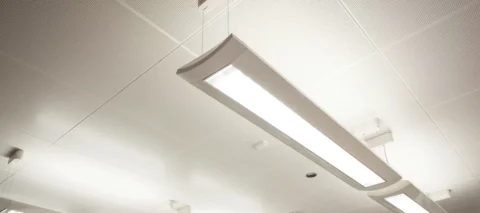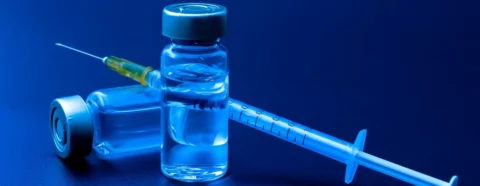Botox is a popular injectable that’s mostly used for erasing wrinkles and frown lines, but what most don’t know is that it’s also an excellent solution to chronic migraines and other medical conditions. Many doctors and specialists recommend botulinum toxin injections because they provide long-term relief to migraine headaches compared to migraine medications and other treatment plans.
So how long does it take for the episodic migraine to return after a Botox treatment? Contrary to what people know, headaches still happen even after a Botox injection for chronic migraine. The only noticeable difference is that their frequency and intensity are reduced. Patients may notice their headaches and other symptoms returning after the Botox is metabolized within 2 to 3 months.
Why Do You Have Headaches As Botox Wears Off?
Botox cosmetic injections are considered one of the top anti-aging treatments, but they’re also the one of the most recommended preventive medications for chronic migraines. This effective treatment uses a diluted form of botulinum toxin to block the pain signals from the brain to the pain receptors around the head and neck.
However, it’s not a permanent solution as the neurotoxin injection is gradually metabolized by the body over 2 to 3 months. One of the common signs of Botox for migraine starting to wear off is when the patient starts experiencing migraine headaches again.
Botox as Long-Term Treatment to Chronic Migraines
Botox is an effective neurotoxin injection that helps reduce the symptoms of chronic migraine like vomiting, nausea, and sensitivity to lights, sounds, and smells. It’s injected into specific treatment areas in the head and neck to block the release of pain chemicals. Patients need about 155 units of Botox split into 31 injections to treat chronic migraine.
After getting Botox injections, patients have to wait for a few days to experience migraine pain relief. It’s also normal for them to experience mild but common side effects like neck stiffness, redness, or swelling right after the Botox treatment of migraine. Putting an ice pack over the treated areas may help alleviate some of the symptoms, but make sure to contact a doctor if they worsen or persist.
Some patients might even need additional treatment cycles of Botox to reduce the symptoms of chronic migraine. You can only know how many Botox treatment sessions are needed for your chronic headaches after consulting with a doctor. They can prescribe a unique headache treatment plan based on your needs.
Do Headaches Mean Botox Is Ineffective?
Unlike what most people think, Botox injections don’t actually stop migraine attacks for good. They only reduce the intensity and frequency of episodic migraine days per month. It’s quite common for patients to still have migraine attacks now and then, but they’re a lot more tolerable compared to when they were untreated.
According to a 2018 study, Botox injections for chronic migraine were safe and effective without major side effects for patients who had them for over 3 years. Based on the same clinical trials, Botox also reduced the average headache days per month of patients.
How Long Before You Experience Headaches Again?
Although Botox is extremely effective in reducing the many symptoms of chronic migraine, the effects of the neurotoxin injection slowly fade after a few months because Botox is metabolized by the body. The production of new pain fibers in the nerves causes the migraine headaches to return more frequently and intensely around 2 to 3 months after the Botox treatment.
Can I Still Get Headaches Even with Recent Botox Treatments?
Headaches are one of the mild but common side effects of Botox treatments and there are many possible reasons why they happen. The good news is that headaches caused by Botox usually subside a few days after the treatment as the neurotoxin settles into the treated areas. Only then can patients start experiencing relief from the different chronic migraine symptoms.
One possible cause of headaches after Botox is the over-contraction of muscles in the treated areas. This leads to a tightness around the forehead or in the back of the patient’s head. Another probable reason is the presence of impurities in the batch of Botox injected into the patient’s muscles. These impurities affect how well the neurotoxin works, leading to headaches and other adverse effects like swelling and neck pain.
Lastly, muscle atrophy may also occur in the muscle groups injected with the neurotoxin. When Botox is injected in the obliquus capitis inferior muscle located in the neck, the patient may experience cervical instability due to the limited movement of the treated muscle. When this happens, the vertebrae rotate out of their normal position, compressing the vagus nerve and pinching the C2 nerve root.
Possible Reasons Why Your Botox Wears Off Quickly

Whether it’s used for migraine treatment or anti-aging purposes, Botox injections are extremely effective in relaxing the muscles and blocking the signals that tell them to contract or feel pain. However, this isn’t a permanent solution because the body eventually creates new neurotransmitters that override the neurotoxin and allow the muscles to contract again.
Knowing about the different factors that cause the neurotoxin to wear off quickly can help you prolong the effects of Botox. Here are a few reasons why your Botox starts fading earlier than expected:
1. Quick Body Metabolism
Each patient has unique body chemistry that determines how they metabolize substances like Botox in their body. The neurotoxin typically lasts about 3 to 4 months in the body, but patients with high metabolism might notice that the migraine pain and other associated symptoms are back earlier than expected.
2. Active Lifestyle
Patients are prohibited to exercise and do other strenuous physical activities for the first few days after their Botox treatment. Exercising causes the body’s blood pressure to increase, leading to swelling and diffusion of the neurotoxin from the injection site to its surrounding area.
3. Amount of Injected Botox
Like other medications, patients require different doses or units of Botox to treat certain conditions. Some patients need more units of the neurotoxin injection than others depending on the muscle strength and activity. With more Botox units injected into their treatment sites, patients may experience the results of the neurotoxin for much longer than those with lower doses.
But this doesn’t mean that patients should get more Botox units than what they actually need. Botox also comes with certain side effects that develop with incorrect dosages. Some of these serious complications include muscle weakness, urinary incontinence, allergic reaction, and difficulty breathing.
4. Injector’s Experience
The success of a Botox treatment heavily depends on the provider’s experience in administering the injection. A skilled injector should have a good understanding of the patient’s anatomy, allowing them to find effective injection sites that produce the best results. The lower cost of Botox treatments from an inexperienced provider might sound tempting, but it often leads to Bad Botox jobs that take lots of money to fix.
5. Stress and Underlying Health Conditions
Botox treatments may be overridden by certain health conditions and stress that weaken or interfere with the neurotransmitters. Taking other medications for your health condition might also affect how long the neurotoxin injection lasts in the treatment areas, so make sure to consult with your doctor or provider first before taking Botox injections.
What To Do After Botox for Migraine Wears Off

For patients who were satisfied with the results of Botox treatment for migraines, doctors may recommend continued treatment plans every few months to maintain the neurotoxin’s effectiveness. The migraines that patients experience may be back at full strength and frequency once they stop taking Botox injections, so it’s best to continue getting Botox or other preventive treatments to improve their quality of life.
In the meantime, patients may be asked to take prescribed medications like analgesics, ergotamines, dopamine antagonists, and triptans to relieve migraine headaches. However, patients are at risk of medication overuse headache when they take these drugs so it’s important to only take the prescribed dosage.
If recommended by the doctor, patients also have the option to try other types of treatments for chronic migraine like transcutaneous supraorbital nerve stimulation and transcranial magnetic stimulation.
Get Your Botox Treatments at Ethos Spa, New Jersey’s Best Provider
One of the biggest factors that affect how long the Botox injections remain effective is the provider’s experience in administering the neurotoxin. And what better way to achieve the Botox results you want than by getting them from New Jersey’s best Botox provider, Ethos Spa.
Our team at Ethos Spa is dedicated to providing our patients with the safest and most effective medspa solutions. We offer non-invasive treatments and advanced med spa technologies to improve your health, appearance, and overall quality of life.
Find out how our Botox treatments can help you by booking a consultation with us today.







